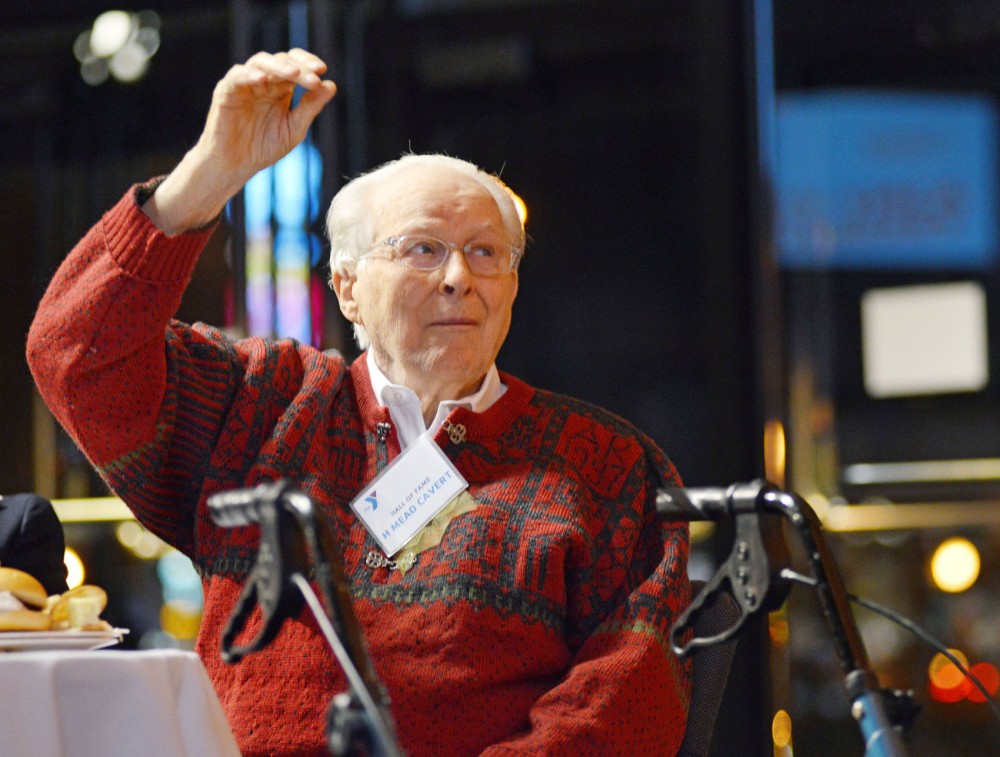The University YMCA celebrated its 125th anniversary Tuesday, marking a program that is almost as old as the University of Minnesota itself.
What began as a resource of spiritual needs and student services has evolved into a community outreach program that supports students and empowers leaders.
“Here, you can come be part of a program, but you can also learn how to lead and manage and run the program,” said Patti Neiman, director of educational efficacy and leadership at the University YMCA.
The organization has narrowed its focus this year to four programs: an advisory committee, ambassadors, a collegiate achievers program and mentors.
This year, about 130 University students are involved with the organization compared to about 300 students last year. About half are students of color.
The changes are part of a “revitalization” of a program that has refocused its direction many times since its inception in 1887.
“We decided to focus more on the quality instead of the quantity of what we were doing,” said statistics sophomore Kristi Edstrom, an ambassador lead for the program.
“Now it’s a lot more specific, and I feel like we are helping in the ways that we need to a lot more,” she said.
Neiman said the new plan implements the “best practices” of past programs and will continue to build over the next years.
“As the University changes and grows, the YMCA has to change and grow,” she said.
The University Y was originally founded in 1887 to serve the “spiritual needs” of the men on campus. It soon evolved to offer student services now associated with the University, such as welcoming new students to campus, orientation, University tours and counseling.
“In the early years, when the [University] was just a place where you came to learn, the YMCA was the place that supported the men at the time,” Neiman said.
As the University took on more of those initial services, the YMCA evolved, taking on roles ranging from social activities to leadership training to community outreach.
“It provided a home, in a sense, for students coming into the University to learn,” Neiman said.
Since 1923, it has occupied three buildings along University Avenue Southeast. Starting at 1425, it later moved to 1901 and is now nestled between fraternity houses at 1801.
U YMCA programming today
The Y Mentors program sends University students to five sites throughout the Twin Cities, pairing them with third, fourth and fifth graders.
Fisheries and wildlife junior Chris Montgomery, who is a site lead for the Y Mentors program, said the program has had a major impact on him.
“I grew up in a suburb, so I had a pretty easy upbringing, but you get to see kids who may not necessarily have had that, and you see their different viewpoints,” he said.
Montgomery recalled one student who walked away angrily from his group in the first week.
She told him “no one cares about me,” but Montgomery replied that he and other volunteers were there precisely because they do care.
As the program progressed, so did the student, and he said she “really kind of turned around.”
“The kids definitely teach you,” Montgomery said, “and then it’s just nice to know that you’re having an impact on the kid’s life.”
The University YMCA also offers the Y Collegiate Achievers Program, which provides support for first-generation college students of color as they transition from high school to college and eventually careers.
“Then they get the opportunity to serve back in other ways as well, so it’s kind of a reciprocal model here,” Neiman said.
The other two initiatives deal with organization aspects: the UY Advisory Committee works with internal operations and communication, and the UY Ambassadors reach out to the community and students.
“I would say one of the biggest things I’ve gotten out of the program is definitely leadership roles,” Edstrom said. “I’ve definitely not been a huge leader in the past, and I’ve learned when I can take charge and [in] what circumstances I can.”
As the program continues with its renewed focuses, staff and members hope it will continue to grow.
“I just want to see where all the new programs go, and I want to see them get to their full potential,” Edstrom said.


